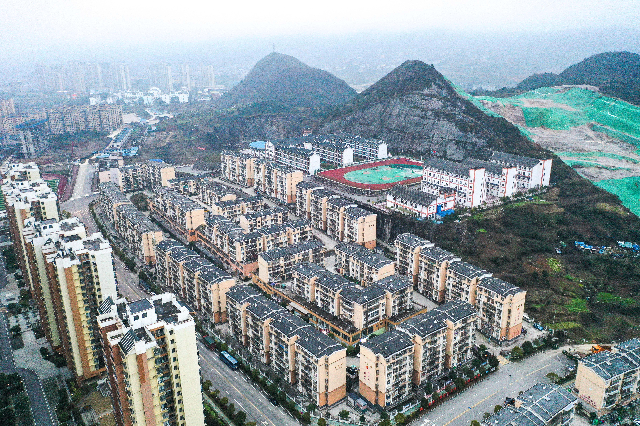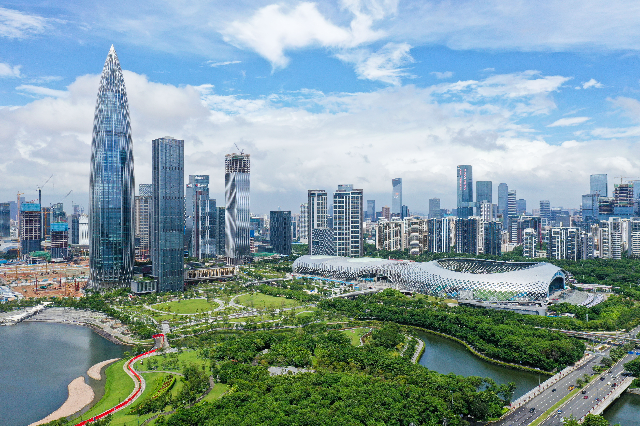The 20th National Congress of the Communist Party of China (CPC) kicked off on October 16 in Beijing. Chinese President Xi Jinping delivered a report to the Congress on behalf of the 19th CPC Central Committee, which highlighted CPC's work in the past decade and its future plans.

The 20th National Congress of the Communist Party of China opens at the Great Hall of the People in Beijing, capital of China, on October 16, 2022. (Photo/Xinhua)
''We can actually observe China's whole-process people's democracy through the Congress,'' said Xia Lu, research fellow at the National Academy of Development and Strategy of Remin University of China (RUC) and associate professor of RUC's School of Marxism Studies, in a recent interview with GDToday.
''The almost 97 million CPC members elected 2,296 representatives to the 20th CPC National Congress from different regions, fields and industries. This is a practice of intra-Party democracy, which sets an example for the democratic development in Chinese society at large,'' Xia told GDToday from Beijing. ''And the development of whole-process people's democracy is one of the essential requirements of Chinese modernization.''

Xia Lu. (Photo provided to GDToday)
How to understand China's modernization?
Now the CPC is on a new journey toward building a modern socialist China in all respects and aims to basically realize socialist modernization by 2035, so the next five years will be crucial for the task off to a good start, the report to the 20th CPC National Congress said.
''China's path to modernization is unique,'' Xia said and stated five reasons. ''First, China has the largest population in the world. The fruit of its modernization will be shared among 1.4 billion Chinese people, which is an arduous endeavor unseen in previous modernized countries.''
The second aspect, according to Xia, is that China's modernization aims to achieve common prosperity, which means no one will be left behind in the process of China's social, economic and cultural development, as well as environmental improvements.
''The third point is that China's path to modernization features both material and cultural advancement,'' Xia went on, ''Chinese culture lays the foundation for material achievements.''
The fourth characteristic of China's modernization, in Xia's view, is that it attaches importance to the balance between social economic development and nature preservation. ''The previous models of modernization across the world tend to sacrifice natural environment for material or economic advancement. That will not be the case of China,'' Xia noted.

Aerial photo taken on September 23, 2022 shows a view of Wanlyu Lake, also known as Xinfengjiang Reservoir, in Heyuan, south China's Guangdong province. (Photo/Xinhua)
Last but not least, Xia said that China will not follow the path of some modernized countries who have accumulated their wealth by exploiting or colonizing foreign nations. ''China will pursue the modernization through peaceful development, coordination and cooperation.''
What has China achieved in the past decade?
''Most of the achievements over the past ten years are very tangible and observable, such as economic development. And the sky has become bluer; the air has become cleaner; the water has become fresher,'' Xia elaborated. ''Many tough problems remaining unsolved in previous times have been solved; many things of vital importance and long-term significance have been accomplished.''
''The first example is the accomplishment of China's poverty alleviation task,'' Xia said. In February 2021, China announced its all-round victory in the fight against poverty, where around 800 million people had been raised from poverty, according to the World Bank's international poverty standard. This means China achieved the first target of the UN 2030 Agenda for Sustainable Development 10 years ahead of schedule.

Aerial photo taken on January 30, 2022 shows a relocation site for poverty alleviation in Kaili, southwest China's Guizhou province. (Photo/Xinhua)
''The second example is that in 2021, China's per capita GDP reached more than 12,000 USD,'' Xia told the reporter. ''It is a signal that China has the potential capacity for becoming developed and more prosperous.''
''When China established diplomatic ties with European countries including UK and Germany fifty years ago, Chinese diplomats were amazed by the rich diversity of goods, dazzling stores and bright classrooms in those countries,'' Xia furthered, ''But now we have seen remarkable social transformations and economic development in our own country, and these achievements are enjoyed by each and every Chinese person.''

Photo taken on September 17 shows the Houhai area in Nanshan District of Shenzhen, south China's Guangdong province. (Photo/Nanfang Daily)
For future development, Xia took Guangdong province for example. ''Guangdong is a forerunner of China's reform and opening-up. Among China’s four special economic zones, there are three in Guangdong, which are Shenzhen, Zhuhai and Shantou,'' Xia said.
''In the next 5 or 10 years, Guangdong should further its opening-up, welcoming more foreign companies to trade and invest in the province and encouraging our professionals, scholars, students and media to fully participate in international cooperation,'' Xia added.
Author | Lydia Liu
Video | Zoey, Ou Xiaoming, He Yang (intern)
Poster | Huo Weilu
Editor | Wing, Steven, Jasmine, Jerry










